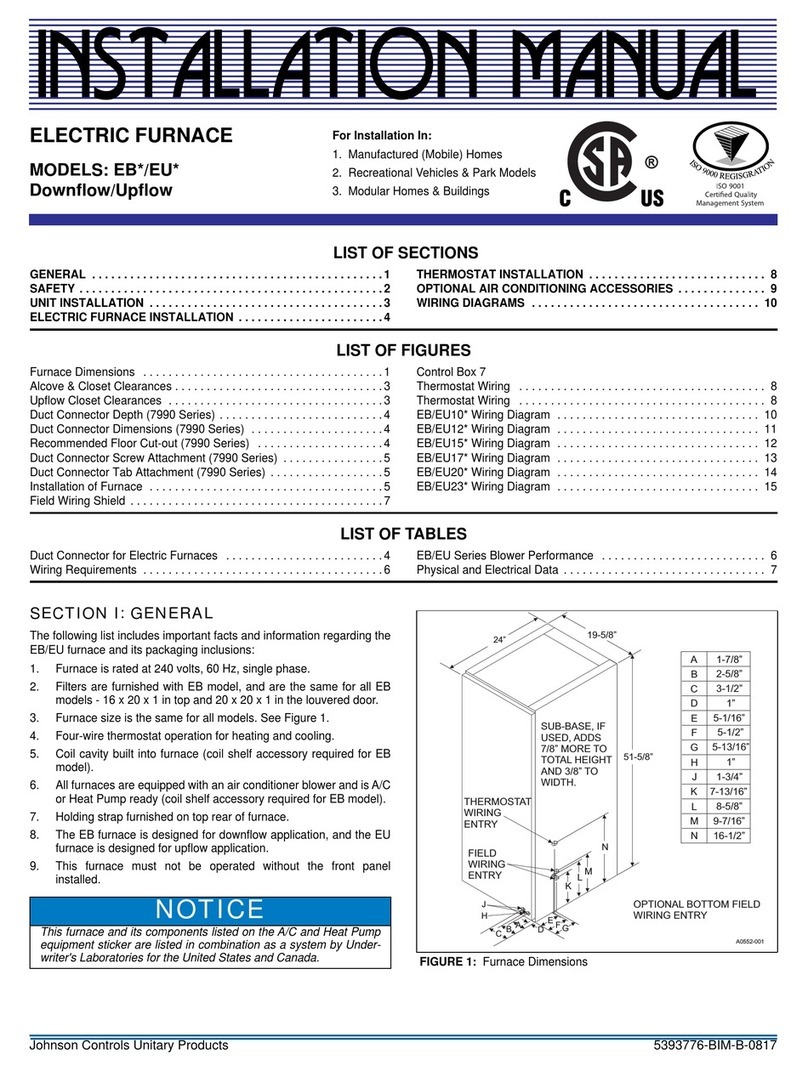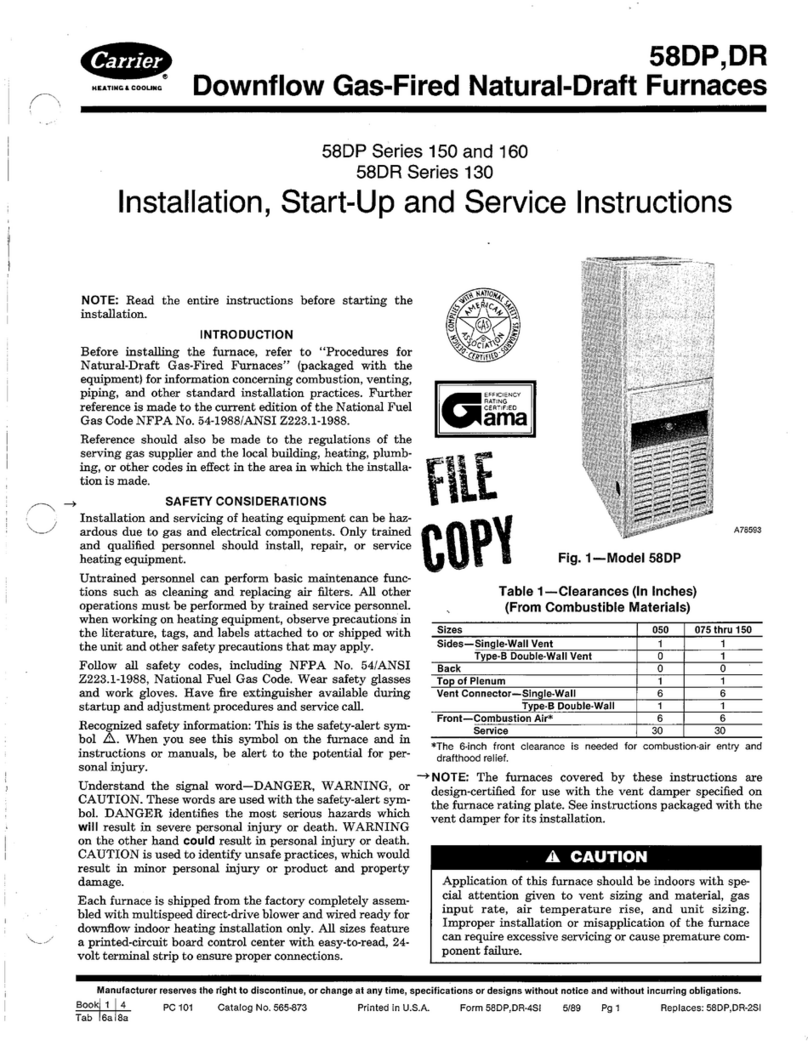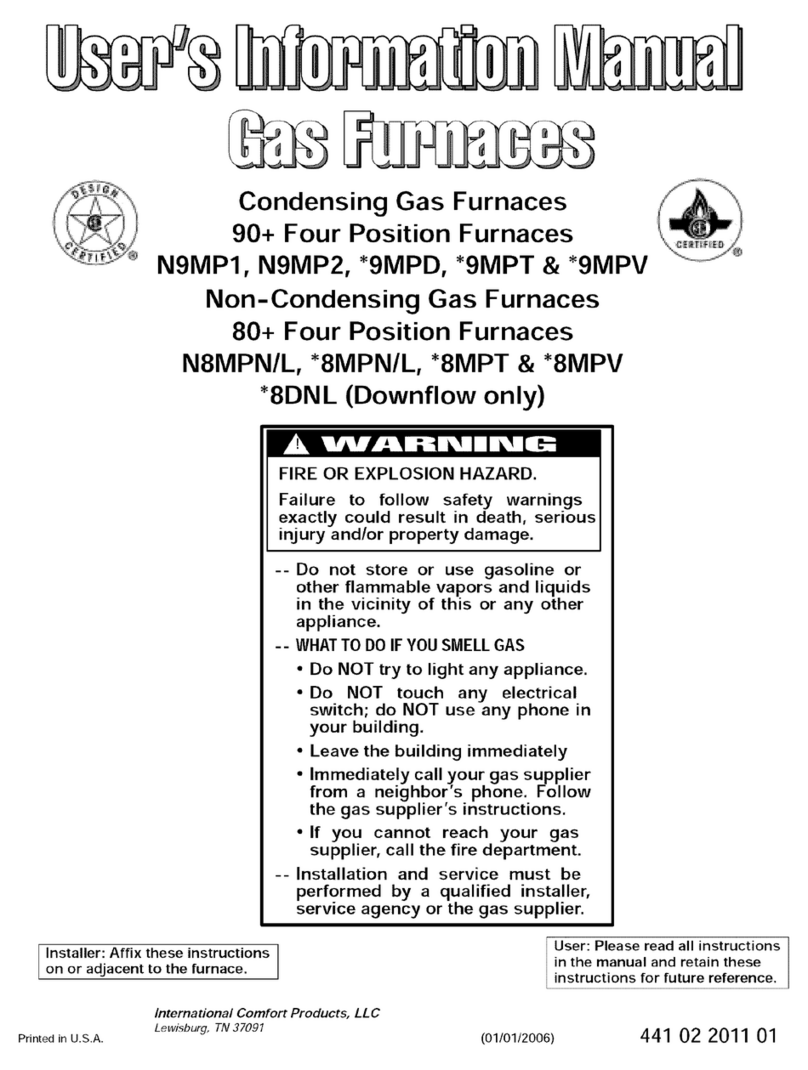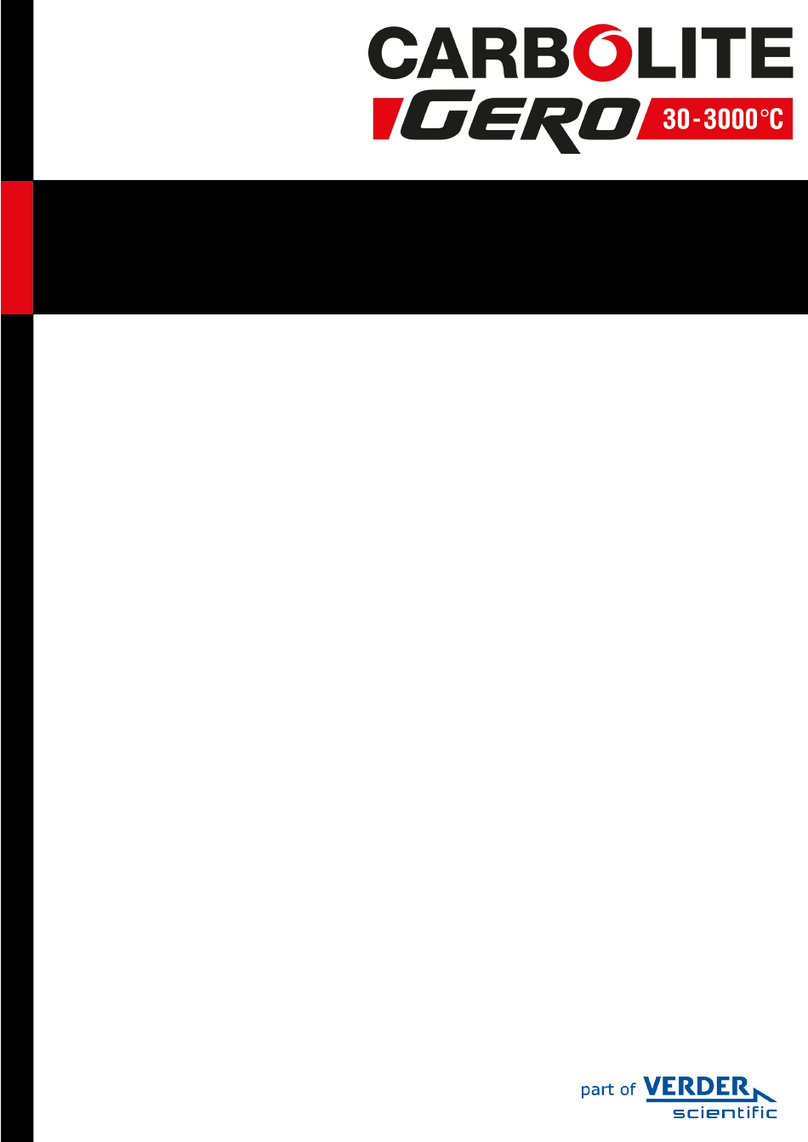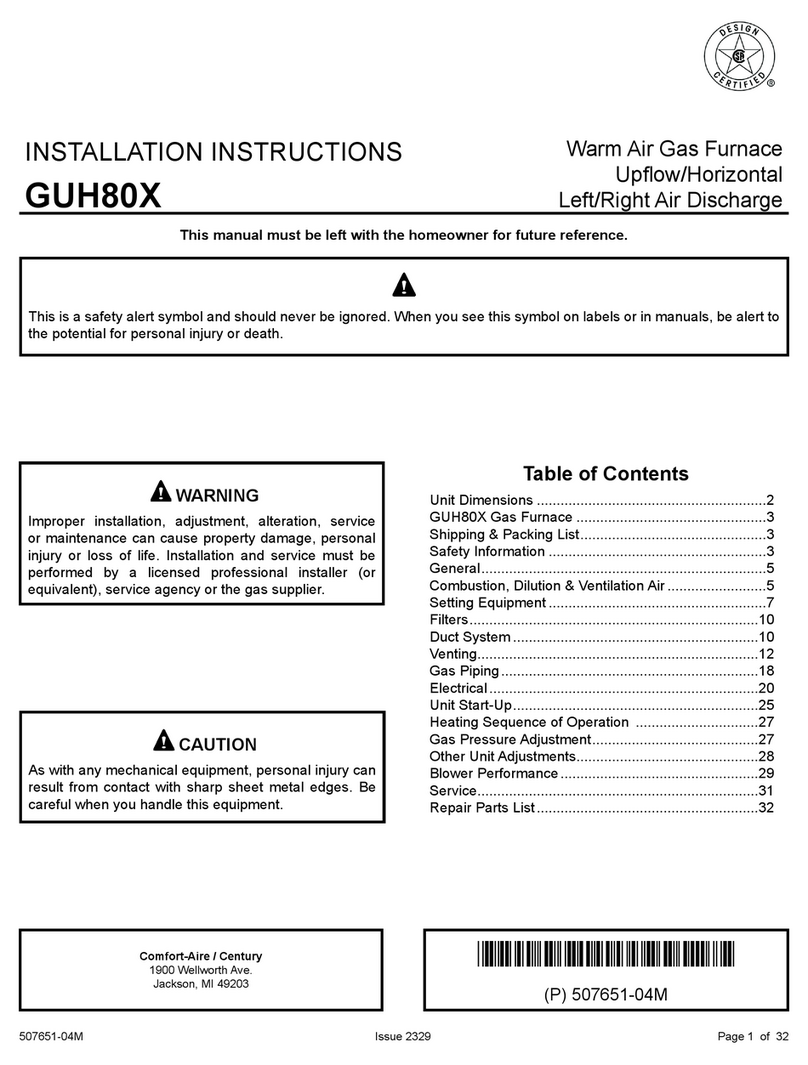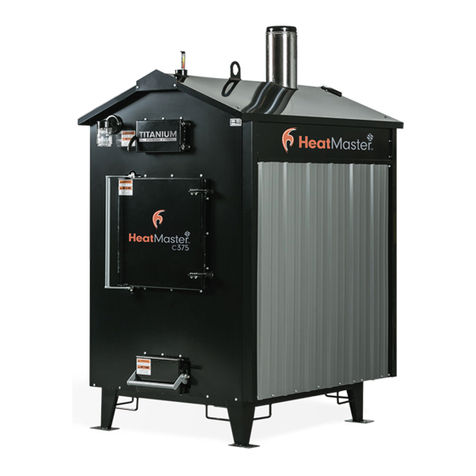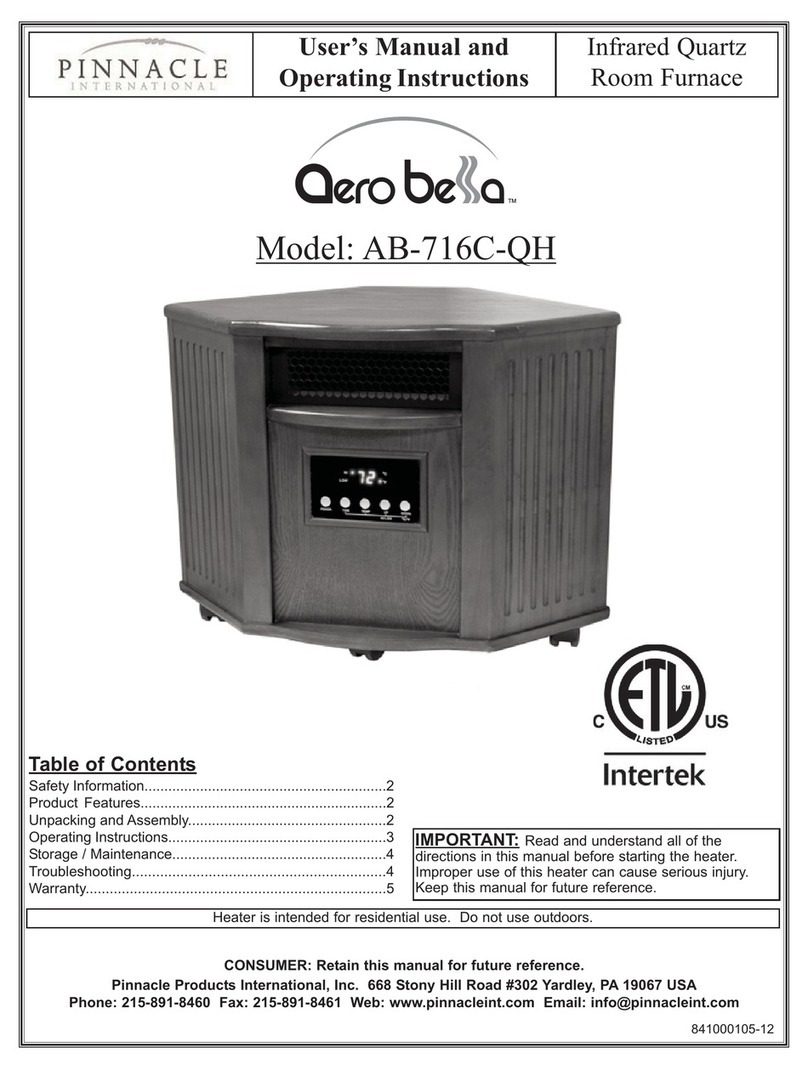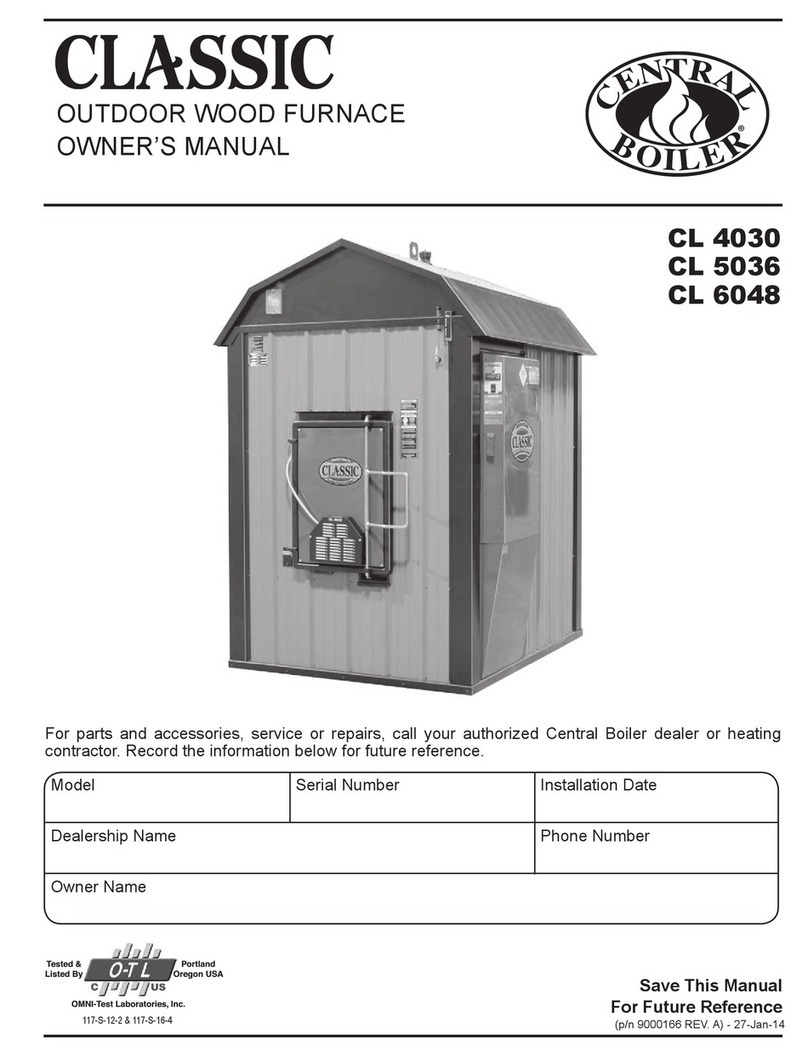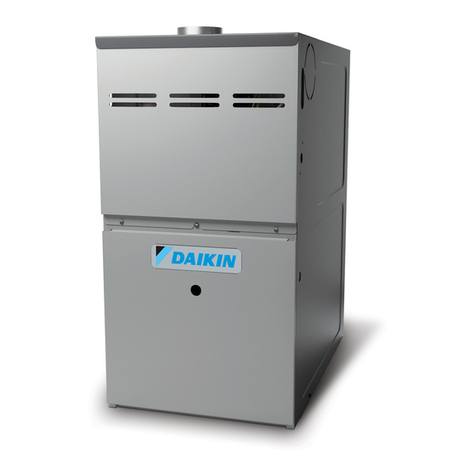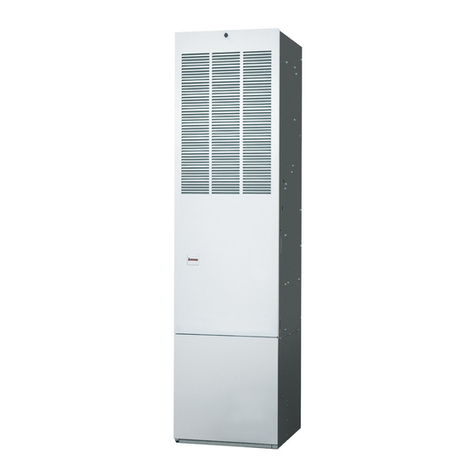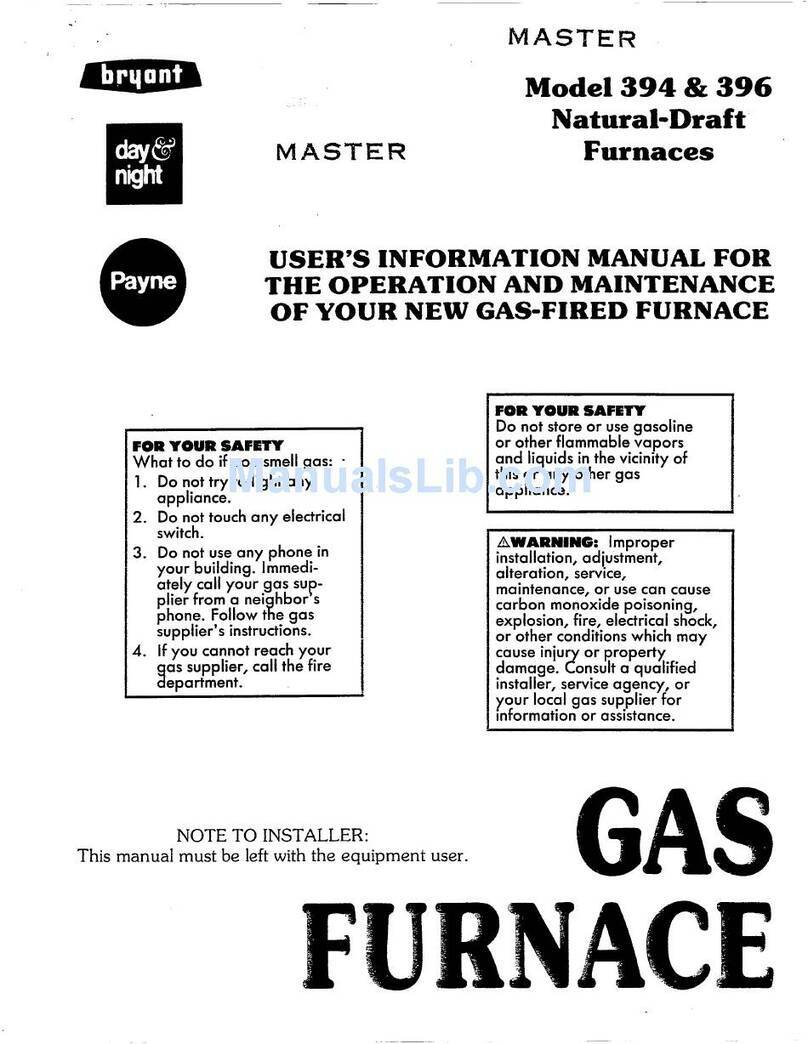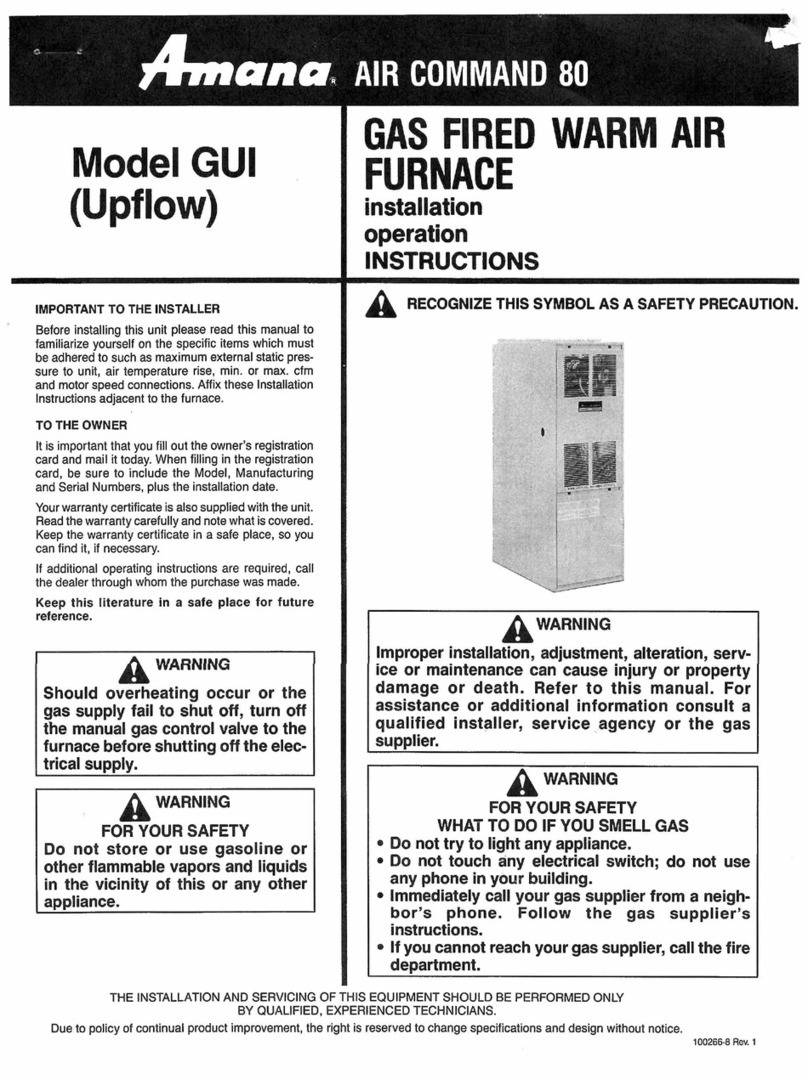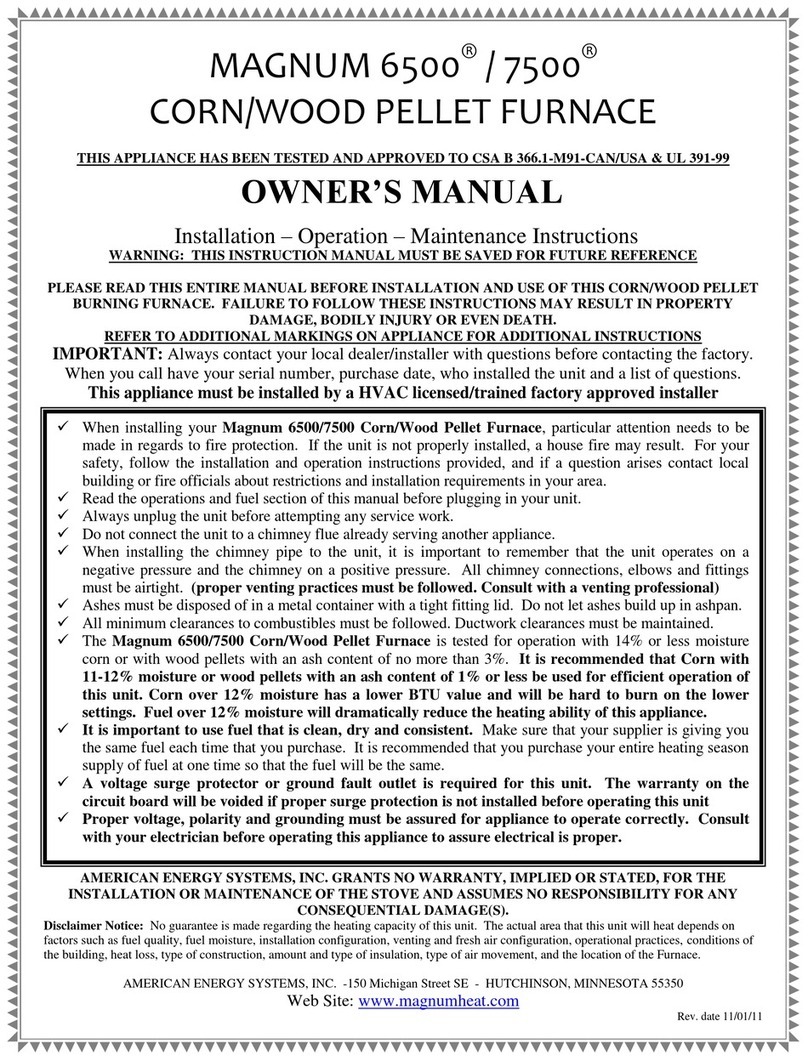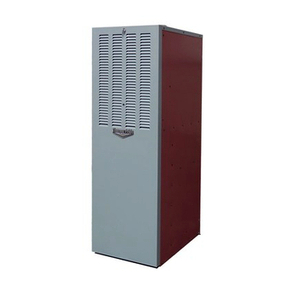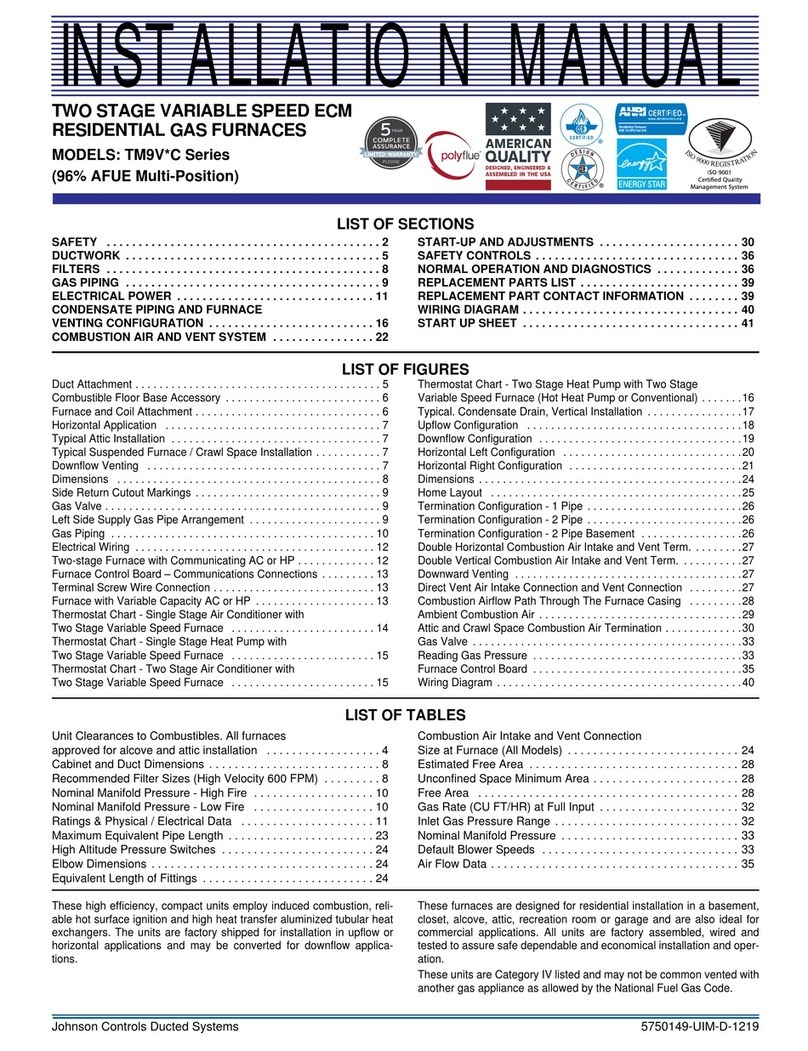
2
..................... 3
..................................... 3
........................................ 5
Manufacturer Warranty ............................................ 5
Minimum Clearances ............................................... 5
Applications ............................................................. 5
Unit Location............................................................ 5
...................... 7
Return Air Connections............................................ 7
Supply Air Connections ........................................... 7
....................................... 8
General Information ................................................. 8
Locating & Cutting Duct Openings........................... 8
Standard Duct Connector Installation ...................... 8
Alternate Attachment Method................................ 9
Round Duct Connector Installation .......................... 10
Installing the Furnace .............................................. 10
................................... 11
Roof Jack Selection ................................................. 11
Locating & Cutting Roof/Ceiling Openings .............. 12
Installing The Roof Jack .......................................... 12
Installation of Transit-Mode Venting System ........... 13
.................................. 14
Line Voltage Wiring.................................................. 14
Connecting Power Supply Wires........................... 14
Low Voltage Wiring.................................................. 15
Connecting Thermostat Wires............................... 15
Verifying Anticipator Setting .................................. 15
Grounding ................................................................ 15
.......................................... 17
Leak Check.............................................................. 18
Oil Tank & Piping Installation................................... 18
One-Line System .................................................. 19
Two-Line System................................................... 19
Fuel line Hook-Up .................................................... 19
Fuel Line Bleeding ................................................... 19
Priming furnaces equipped with Honeywell........... 20
R7184 primary control:.......................................... 20
Priming furnaces equipped with Beckett 7505
primary control....................................................... 20
Fuel Oil Type ........................................................... 20
Conversion to Propane (LP) Gas............................. 20
Atmospheric & Direct Ignition Furnaces................ 20
High Altitude Conversion ......................................... 20
Flue Gas Sampling .................................................. 21
................................... 22
M1M Operating Instructions..................................... 23
How to Shut Off Gas - Direct Ignition .................... 23
M5S Operating Instructions ..................................... 23
M1B Operating Instructions ..................................... 23
How to Shut Off Gas - Oil & Gas Gun................... 24
Verifying & Adjusting Temperature Rise.................. 24
Burner Adjustments ................................................. 24
Gas Pressure ........................................................ 24
Combustion Air ........................................................ 24
Gas Gun (M1B Models)......................................... 25
Oil Gun Only (M5S Models) .................................. 25
Electrode Setting (Oil Gun Only) ............................. 25
Switching Ignition Control between Interrupted
and Intermittent Duty ............................................... 25
......................................... 25
Direct Ignition Furnaces (M1M Models)................... 25
Oil Gun Furnaces (M5S Models) ............................. 25
Gas Gun Furnaces (M1B Models) ........................... 26
................... 26
............................................... 27
Direct Ignition Furnaces (M1M Models) & Gas
Gun Furnaces (M1B Models)................................... 27
Oil Gun - Honeywell R7184 or Beckett 7505
Controls Only - M5S Series. .................................... 28
...................................... 29
......................................................... 30
Homeowner Information .......................................... 30
Installer Information ................................................. 30
Additional Oil Furnace Maintenance........................ 30
Optional Add-On Air Conditioning............................ 30
................................................. 31
Table 10. M1/M5 Furnace Specifications -
Factory Settings .................................................... 31
Table 11. Equivalent Orifice Sizes for High
Altitude Installations .............................................. 32
Table 12. A/C Blower Speed Selection Chart ....... 32
Gas Information ....................................................... 33
Table 13. Gas Flow Rates..................................... 33
Table 14. Gas Pipe Capacities.............................. 33
Electrical Information ............................................... 34
Figure 38. Gas Direct Ignition Furnace, Heating
& A/C Ready - All M1M Models............................. 34
Figure 39. Gas and Oil Furnaces, A/C Ready -
M1B & M5S (066, 086) Models ............................. 35
... 36




















